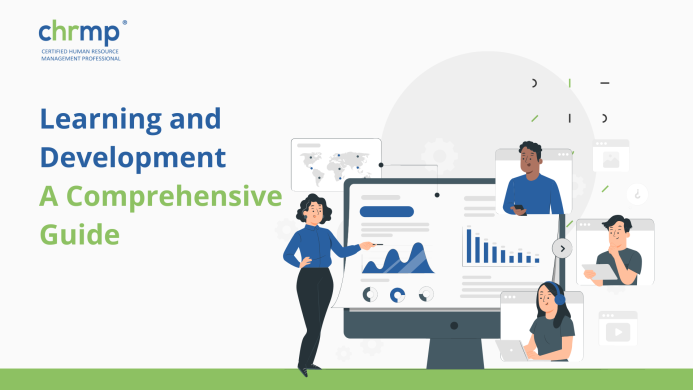

Whether you’re a business owner or an HR pro, you know that investment has to be made for the career growth and development of the workforce.
Learning and development programs are a sure-fire strategy for increasing employee retention, and employee satisfaction, reducing the turnover rate and absenteeism.
The role of learning and development (L&D) in HR is to design and manage programs and drives for employees’ growth and development, which translates to the overall growth and development of the organization.
This includes identifying employee training needs, selecting appropriate training modules for the workforce, and evaluating developmental programs’ impact on the organization’s bottom line.
In this guide, we will discuss the role of L&D in HR management and how they can be effectively implemented, the importance of L&D programs, the various methods and approaches to learning and the effectiveness of such programs in promoting L&D in the company.
The idea is to equip the workforce with knowledge and skills to successfully support the organisation’s growth and development as a whole.
We hope that through this guide, you will gain a deeper understanding of the value of L&D and be equipped with the knowledge and skills to successfully support the growth and development of your organization’s workforce.
Let’s get started!
The process of acquiring new skills, knowledge and ability to upgrade one’s performance with the help of study modules, activity-based learning, on-the-job training programs, self-study and mentorship is called L&D.
It is vital for any organization to be able to compete with other similar outfits in the industry as these processes are constantly being upgraded at a fast pace, and to stay competitive in the industry, organisations have to keep up-to-date on this field.
L&D can take many forms, including traditional classroom-based training, online courses, workshops, seminars, and experiential learning activities. It is often a continuous process throughout an individual’s career and can involve various learning methods and approaches.
There are several benefits to implementing L&D programs in companies:
Employees who participate in L&D programs may improve their job performance, leading to better results for the company.
Employees who feel their employer is investing in their professional development may be likelier to stay with the company, which may lower employee turnover and improve employee engagement.
L&D programs can help employees acquire skills compatible with new and advanced technology and improve existing ones, which can benefit the company in several ways, including increased efficiency, productivity, and competitiveness.
When employees feel they are learning and growing in their careers, it can increase job satisfaction and morale.
Companies that offer learning and development opportunities to their workforce may be better able to adapt to changing business conditions, new technologies and scientific advancement.
Companies that invest in their employees’ development may be viewed more positively by potential employees and customers, which can help to enhance the company’s reputation.
Companies can implement various learning and development strategies to support their employees’ growth and development. Here are five common approaches:
This learning and development strategy involves providing employees with hands-on training and coaching while performing their job duties, which can effectively teach new skills and knowledge in a practical, real-world setting.
Companies may offer structured training programs that cover a specific topic or skill set. These programs can be delivered in person or online, including lectures, exercises, and assessments.
Pairing employees with experienced mentors or coaches can provide a more personalized approach to learning and development. This can involve one-on-one sessions, or group coaching sessions focused on specific areas of development.
Some companies may encourage employees to take ownership of their own learning and development by providing resources and support for self-study and self-directed learning activities.
This learning and development strategy involves actively participating in real-world situations and experiences to learn and grow. This includes internships, job rotations, and action learning projects.
The 70/20/10 model of organizational learning was developed by Morgan McCall, Robert Eichinger, and Michael Lombardo of the Center for Creative Leadership (CCL), a global leadership development provider. It was first introduced in the late 1980s and has since gained widespread popularity as a framework for understanding and optimizing organisational learning and development.
The 70/20/10 model of organizational learning is a framework that suggests that learning and development in an organization should be a balance of three different sources:
Formal learning (70%): This refers to the organisation’s structured training programs and courses and may include classroom-based training, online courses, and other structured learning interventions.
On-the-job learning (20%): This type of learning involves acquiring new skills and knowledge through real-world experiences and activities. This can include things like job rotation, mentorship, and hands-on training.
Other learning experiences (10%): This includes learning and development activities outside formal training programs and on-the-job learning. This could include things like self-study, networking, and experiential learning activities.
The 70/20/10 model suggests that balancing these three types of learning and development sources is most effective for supporting long-term learning and development in an organization. It emphasizes the importance of both formal training and real-world experiences in supporting employee growth and development.
There is some debate about the effectiveness of the 70/20/10 model of organizational learning as a one-size-fits-all approach to learning and development. While it has gained widespread popularity and is often cited as a useful framework for understanding the different sources of learning and development, it has also been criticized for its simplicity and lack of scientific support.
Some criticisms of the model include:
Overall, while the 70/20/10 model can be a useful starting point for understanding the different sources of learning and development, it is important for organizations to consider their learners’ specific needs and preferences and tailor their learning and development strategies accordingly.
Here are some common methods of learning that are used in companies:
Companies may offer structured training programs that cover a specific topic or skill set. These programs can be delivered in-person or online, including lectures, exercises, and assessments.
This learning and development strategy involves providing employees with hands-on training and coaching while performing their job duties. This can be an effective way to teach new skills and knowledge in a practical, real-world setting.
Pairing employees with experienced mentors or coaches can provide a more personalized approach to learning and development. This can involve one-on-one sessions or group coaching sessions focused on specific areas of development.
Some companies may encourage employees to take ownership of their learning and development by providing resources and support for self-study and self-directed learning activities.
This learning and development strategy involves actively participating in real-world situations and experiences to learn and grow. This can include things like internships, job rotations, and action learning projects.
This involves combining multiple learning methods and approaches, such as formal training and self-study or online and in-person learning. Some companies may encourage employees to take ownership of their learning and development by providing resources and support for self-study and self-directed learning activities.
There are several job roles in the field of learning and development, including:
This role is responsible for designing, developing, and delivering learning and development programs for the organization. They may also be responsible for managing budgets, resources, and staff.
This role organises and coordinates training programs, including scheduling and booking training facilities, coordinating materials, and tracking attendance.
This role is responsible for designing and developing learning materials, including online courses, training manuals, and other resources. They may also be responsible for evaluating the effectiveness of training programs.
This role leads and facilitates training sessions, including presenting material, answering questions, and facilitating discussions.
This role is responsible for designing and developing online learning materials, including video lectures, interactive modules, and assessments.
The role of talent development is responsible for identifying employees’ learning and development needs and designing and implementing programs to meet those needs. They may also be responsible for coaching and mentoring employees.
As a learning and development specialist, you play a crucial role in designing, implementing, and evaluating training programs within organizations. To excel in this field, here are five essential skills you should focus on:
Strong instructional design skills are fundamental for a learning and development specialist. This involves understanding how people learn, creating effective learning objectives, designing engaging content, and selecting appropriate instructional methods and technologies.
Conducting thorough training needs assessments allows you to identify skill gaps and determine the specific training requirements of individuals or departments. This skill involves utilizing various assessment tools, conducting interviews or surveys, and analyzing data to pinpoint areas for improvement.
Being able to effectively deliver training sessions and facilitate learning experiences is critical. This involves presenting information in a clear and engaging manner, adapting training methods to different audiences and learning styles, and encouraging participation and interaction.
The ability to measure the effectiveness of training programs is essential for continuous improvement. Familiarity with evaluation models, techniques, and tools will enable you to gather feedback, assess knowledge retention, and evaluate the impact of training on individual and organizational performance.
In today’s digital age, proficiency in learning technologies and e-learning platforms is highly valuable. Familiarize yourself with learning management systems (LMS), authoring tools, virtual classrooms, and other e-learning technologies. This skill will enable you to design and deliver engaging online courses and blended learning experiences.
Remember, alongside these core skills, it’s also beneficial to possess excellent communication and interpersonal skills, as well as the ability to build relationships and collaborate effectively with stakeholders throughout the organization. Continuously staying updated on industry trends and best practices will further enhance your expertise as a learning and development specialist.
What is learning and development?
Learning and development refers to the processes by which employees acquire new knowledge, skills, and abilities in order to improve their performance and advance their careers. This can be achieved through various methods, including training programs, workshops, online courses, and on-the-job learning experiences.
Why is learning and development important?
Learning and development is important because it can lead to improved performance, increased retention, enhanced skills, improved morale, greater adaptability, and an enhanced reputation for the company. Investing in employee development can also help companies stay competitive in an ever-changing business environment.
How do you implement a learning and development program?
To implement a learning and development program, you will need to identify the learning and development needs of your employees and design a program that meets those needs. This may involve creating a budget, identifying resources, and partnering with external providers. It’s also important to measure the effectiveness of your learning and development programs to ensure that they are meeting their goals..
Thank you for reading our comprehensive guide to L&D!
We hope you understand the importance of investing in employee development and the various job roles and programs that make up the field better.
Remember, investing in your employees’ L&D can lead to improved performance, retention, enhanced skills, morale, greater adaptability, and an enhanced reputation for your company.
So don’t hesitate to implement a learning and development program in your organization today!
© 2007-2025 CHRMP| All Rights Reserved | Powered by Ripples Learning & Research Private Limited
